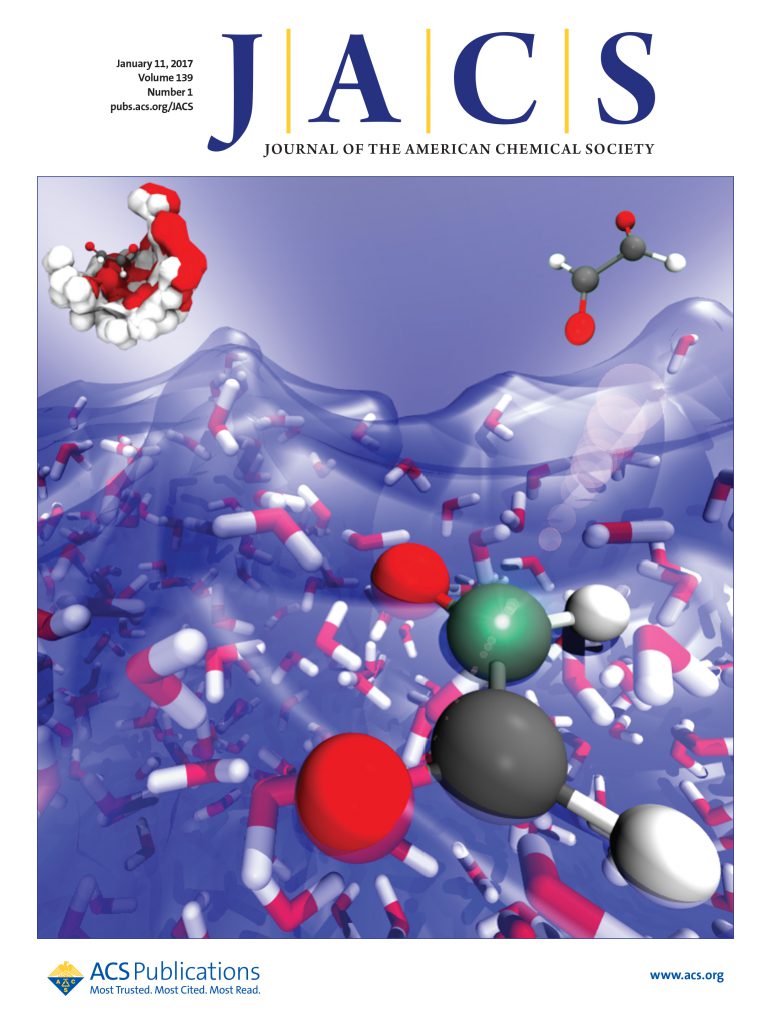氨基转移和铜催化作用下非活化烷基硼醇酯的C(sp3)-N偶联。
IF 14.4
1区 化学
Q1 CHEMISTRY, MULTIDISCIPLINARY
引用次数: 0
摘要
金属催化的C(sp3)-N偶联仍然是一个艰巨的合成挑战,特别是与烷基亲电试剂,由于竞争途径,如缓慢的氧化加成,β-氢化物消除和烷基异构化。虽然烷基卤化物被广泛使用,但它们的局限性激发了人们对替代偶联伙伴的兴趣。烷基硼松醇酯(Bpins)虽然稳定且易于获取,但由于其较差的转金属反应性和对原酰化和异构化的敏感性,在C-N偶联中未得到充分利用。在这里,我们报道了一种双催化策略,将铜催化与光催化氨基自由基转移(ART)结合在一起,在温和的氧化还原中性条件下实现了非活化烷基bpin的C(sp3)-N偶联。苯甲酸酯既可作为氨基自由基前体,又可作为内部氧化剂,避免了外部氧化剂的需要,使两种亲核试剂之间有效偶联。该策略为C(sp3)-N键的形成提供了一个通用的和区域选择性的平台,可容纳一系列广泛的胺(12类),包括吲哚类、茚唑类、吡唑类、苯胺类和磺胺类。通过复杂药物分子的后期功能化和烯烃的一锅氢胺化,进一步举例说明了该合成实用性。本文章由计算机程序翻译,如有差异,请以英文原文为准。
C(sp3)-N Coupling of Nonactivated Alkyl Boronic Pinacol Esters by the Merger of Amino Radical Transfer and Copper Catalysis.
Metal-catalyzed C(sp3)-N coupling remains a formidable synthetic challenge, especially with alkyl electrophiles, due to competing pathways such as slow oxidative addition, β-hydride elimination, and alkyl isomerization. While alkyl halides are commonly used, their limitations have spurred interest in alternative coupling partners. Alkyl boronic pinacol esters (Bpins), though stable and widely accessible, are underutilized in C-N coupling due to their poor transmetalation reactivity and susceptibility to protodeborylation and isomerization. Here, we report a dual catalytic strategy that merges copper catalysis with photocatalytically enabled amino radical transfer (ART) to achieve C(sp3)-N coupling of nonactivated alkyl Bpins under mild, redox-neutral conditions. Readily available morpholino benzoate acts both as an aminyl radical precursor and as an internal oxidant, circumventing the need for external oxidants and enabling efficient coupling between two nucleophiles. This strategy delivers a general and regioselective platform for C(sp3)-N bond formation, accommodating a broad array of amines (12 classes), including indoles, indazoles, pyrazoles, anilines, and sulfonamides. The synthetic utility is further exemplified through the late-stage functionalization of complex drug molecules and a one-pot hydroamination of alkenes.
求助全文
通过发布文献求助,成功后即可免费获取论文全文。
去求助
来源期刊
CiteScore
24.40
自引率
6.00%
发文量
2398
审稿时长
1.6 months
期刊介绍:
The flagship journal of the American Chemical Society, known as the Journal of the American Chemical Society (JACS), has been a prestigious publication since its establishment in 1879. It holds a preeminent position in the field of chemistry and related interdisciplinary sciences. JACS is committed to disseminating cutting-edge research papers, covering a wide range of topics, and encompasses approximately 19,000 pages of Articles, Communications, and Perspectives annually. With a weekly publication frequency, JACS plays a vital role in advancing the field of chemistry by providing essential research.

 求助内容:
求助内容: 应助结果提醒方式:
应助结果提醒方式:


